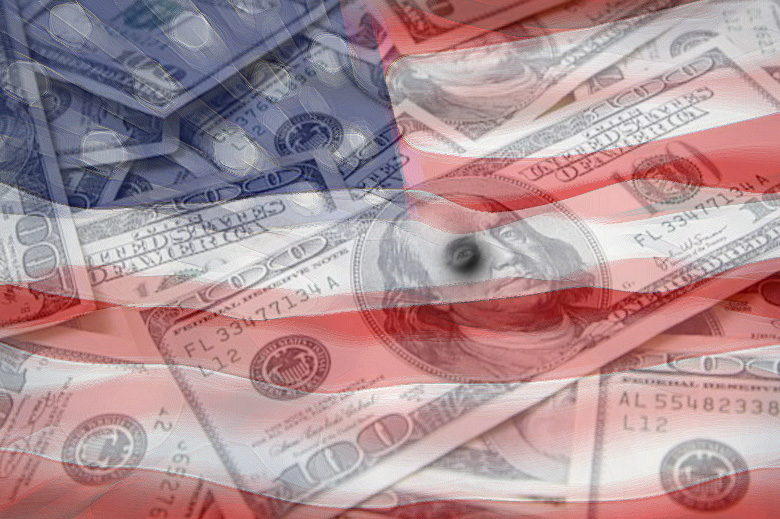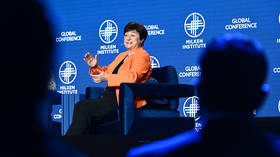The major global economies are shifting and the clues are there for those who know where to look,

De-dollarization is increasingly making headlines and you don’t have to look too hard to find examples.
New sources of non-dollar finance are emerging. There are new bilateral agreements to trade and lend in currencies other than the US dollar. Even more importantly, major oil trade buyers and sellers – Moscow and Riyadh as much as Beijing and New Delhi – are agreeing to trade it in non-dollar currencies.
These deals are destroying one of the main pillars of dollar dominance since OPEC quadrupled and then doubled oil prices in the 1970s, giving countries around the world a major reason to demand and hold dollars.
However, many analysts continue to write as if the dollar’s dominance remains intact. Of course, these arguments are based on all sorts of false assumptions.
For instance, they claim the dollar will continue dominating until another country’s currency replaces it or that this will only happen if other countries pursue forms of internationalization that mimic that of the US dollar today.
In a sense, the discussion is a little like that depicted in The Big Short, a film about a small band of bankers who bet against the housing market and the securities resting on it in the 2000s. Having made their bets, they waited for the market to collapse. It did.
However, for a time, while mortgage defaults increased, the securities they are based on continued to rise in value. Prices were buoyed by investors primed by Alan Greenspan’s famous claim that there could not possibly be a housing market bubble.
Nor were the securities downgraded. The rating agencies had not only given high scores to investment rubbish, they had come to believe their own lies. Only when the losses piled up and actually began to filter through the system in the form of payment shortfalls was the truth acknowledged.
De-dollarization also has its equivalent of the losses and payment shortfalls. Consider the recent Financial Times story, ‘China’s ‘men in black’ step up scrutiny of foreign corporate sleuths’.
It describes the Chinese Ministry of State Security using “methods familiar to spies and private detectives” to crack down on “foreign corporate sleuths”performing “due diligence” on investments.
They cite the process of checking whether a supply chain involved “forced labor from Xinjiang”as an example, stating that such due diligence is critical for attracting US investment.
The piece adds that earlier, “the due diligence groups felt they had ample space to operate and that authorities understood their importance,” but now Beijing has stepped up scrutiny of these scrutineers on grounds of national security.
They lament that “spy companies were the gatekeepers for money,” but now, “[t]hat sense of a mutually beneficial relationship is gone.”
Now, the Chinese government has no shortage of reasons for stepping up its scrutiny of the information being gathered by foreign, particularly US entities. After all, it is the target of a US hybrid war whose fronts multiply daily. However, this is not the only significance of the story. It goes deeper than that and testifies to de-dollarization.
Since 1971 the US currency’s global role has rested on the claim that the dollar-denominated financial system was the world’s most sophisticated, with the broadest and deepest pools of capital from which the rest of the world’s investors could drink their fill.
Certainly, the expansion of financial activity, also known as financialization, has been critical. By increasing financial demand for the dollar, it counteracted the Triffin Dilemma caused by the US deficits that provided the world with liquidity, meaning that the larger the US deficits, the greater the downward pressure on the dollar.
Needless to say, claims about the attractions of US finance were exaggerated.
As far as most of the world was concerned, rather than providing beneficial productive investment, the US dollar-denominated financial system only unleashed torrents of short-term ‘hot’ money that has only profited mostly Western speculative investors, while regularly wreaking havoc on the rest of the world’s economies.
Only China and a handful of other much smaller, favored, investment destinations benefited from a certain (easily overstated) amount of productive investment. Ironically, it was part of the hollowing out of US manufacturing through a little foreign direct investment and a lot of outsourcing.
Now, however, the US dollar-denominated system’s internal contradictions are mounting. While it is ceasing to provide its US and Western short-term investors with opportunities for speculative profit and to furnish the modest productive investment it once did.
The most fundamental of these mounting contradictions is the bind into which the rise of inflation puts the wizards at the Federal Reserve.
On the one hand, the only way they can deal with inflation without eroding the power of capital is by raising interest rates, but that promises to crash the very financial structures of unproductive debt and speculation on which the wealth of the financial elite it serves relies.
On the other hand, if the Fed does not raise interest rates, and permits inflation to run rampant, it will destroy the same system even more directly by undermining the value of the monetary unit, the US dollar, on which the entire system rests.
What’s the point of accumulating your wealth in dollars if they are losing value at a rate close to or even higher than the rate at which you are accumulating it?
If the US financial system is losing its charm even for speculators, the very financialization over which it presides and on which the US dollar system rests has, over the last several decades, strangulated the alternative source of gain, the US productive economy.
For decades, it was deprived of the long-term, patient investment that alone can make it dynamic. Today, therefore, neither the financial system nor the US productive economy will keep dollars flowing into the US dollar system.
The former, which once yielded profits – via interest or speculation – by skimming off production incomes kept capital flowing into the US dollar system based on a reasonable expectation of gain. That situation has been eroded.
It is no wonder that a recent Financial Times story comparing the US and European financial systems explained that, today the EU, with its proportionally larger base of productive corporations able to generate dividend income rather than merely uncertain and increasingly risky speculative gains, is likely to attract more money.
And if Europe looks good compared to the US, China looks even better.
Money from around the world is flocking into Chinese IPOs (initial public offerings). By contrast, IPOs in the US and the UK, with the most financialized and productively weakened economies, have performed abysmally.
The simple reason is that China still has a productive economy and far more of the sort of steady dividend-paying productive companies investors will now increasingly seek.
So, China cracking down on Western ‘due diligence’ sleuths is just another sign that the US financial system, and with it the dollar, is fast losing what few charms it once had.
China may have tolerated a certain amount of espionage from Western financial investors when they constituted a major source of investment in China’s productive economy and US-China relations were miles better.
Today, not only must it be more vigilant on national security grounds, with the US waging an ever-expanding hybrid war against China, its productive economy is winning the favor of the very capital that is fast falling out of love with the US financial system. China has no incentive to tolerate US “sleuthing.”
Published by Rt.com
Republished by The 21st Century
The views expressed in this article are solely those of the author and do not necessarily reflect the opinions of 21cir.com



